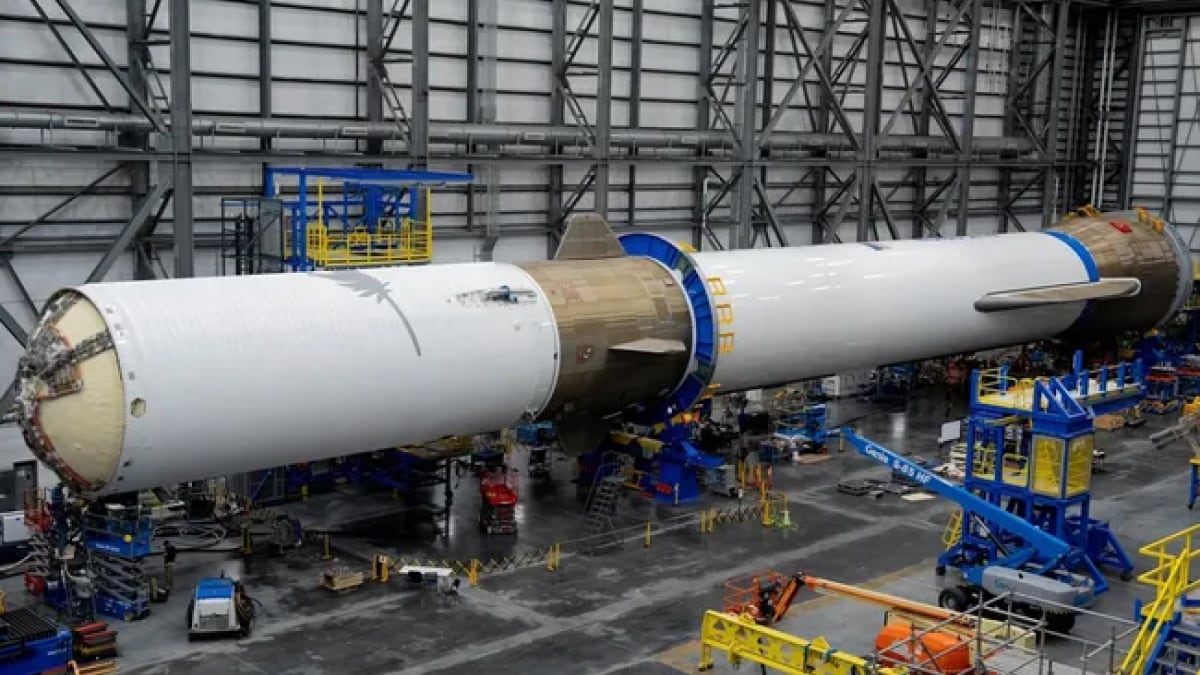Blue Origin's much-anticipated New Glenn rocket took a significant step toward its inaugural flight with the assembly of its first and second stages. The rocket, designed for heavy-lift missions, was recently stacked in Blue Origin's facility near NASA's Kennedy Space Center in Florida. Named “GS-1” and “GS-2,” the stages were joined for the first time, marking a milestone as the company prepares the rocket for a maiden launch, possibly in November 2024, from Cape Canaveral Space Force Station.
Advanced Design for Heavy-Lift Capabilities
The company revealed the news on its official Standing at 270 feet in its two-stage form, New Glenn is a major addition to the current heavy-lift rocket lineup. Unlike traditional expendable rockets, its first-stage booster is fully reusable, promising to lower launch costs and increase launch frequency. The three-stage configuration, if used, will bring the rocket's height to 313 feet. For context, SpaceX's Falcon 9 varies between 209 and 230 feet tall, depending on configuration.
Blue Ring Spacecraft and National Security Mission
The upcoming mission, known as DarkSky-1, will carry Blue Origin's Blue Ring spacecraft platform. The flight is part of a certification test under the National Security Space Launch programme, sponsored by the Defense Innovation Unit. The Blue Ring platform, designed to serve as a flexible service module for satellites, can be deployed into orbit or remain attached for extended missions. The company has promoted Blue Ring's advanced capabilities in manoeuvring across various orbits, appealing to both commercial and government clients.
Next Steps and Test Firing
As Blue Origin progresses with New Glenn's development, a static fire test of the rocket's BE-4 engines will be conducted, igniting the first stage's seven engines for a preliminary test. Originally scheduled for October, the launch was delayed after NASA decided to stand down to avoid possible cost overruns, with plans to launch the twin ESCAPADE Mars probes now postponed to 2025.


